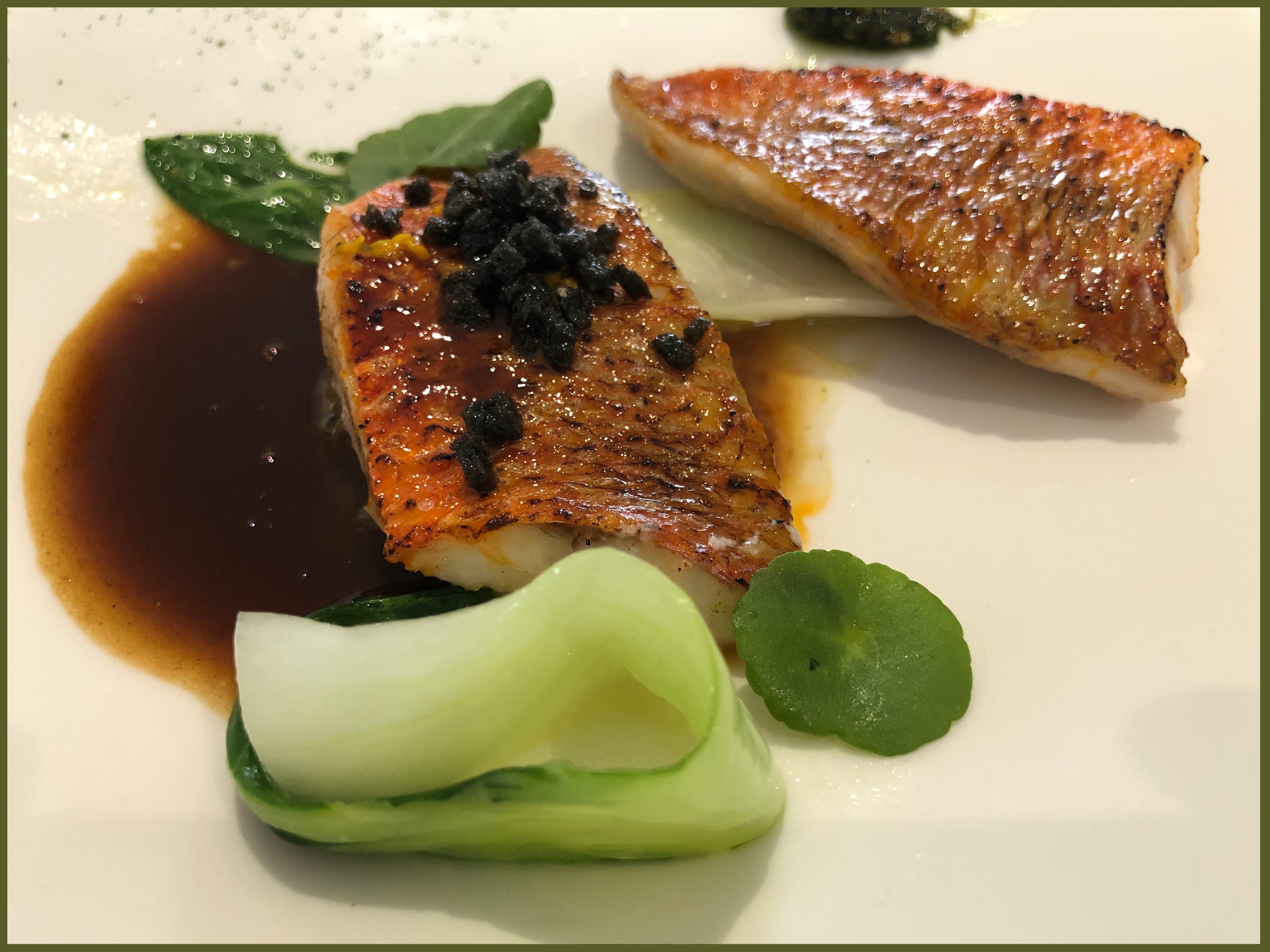
“To eat is a necessity, but to eat intelligently is an art” was one of the famous maxims of Francois de La Rochefoucauld (1613 - 1680) that we at Normandy American Heroes believe in when traveling.
Eating is necessary in order to live; but to eat with awareness and knowledge is a talent in itself when you travel abroad!
The owner, expatriate all his life traveled and lived abroad takes Normandy American Heroes guests to restaurants that offer a unique cuisine that gives them the opportunity to have their taste buds travel!
Enjoy this brief historical tour of the French cuisine, of some European anecdotes and let your imagination travel!
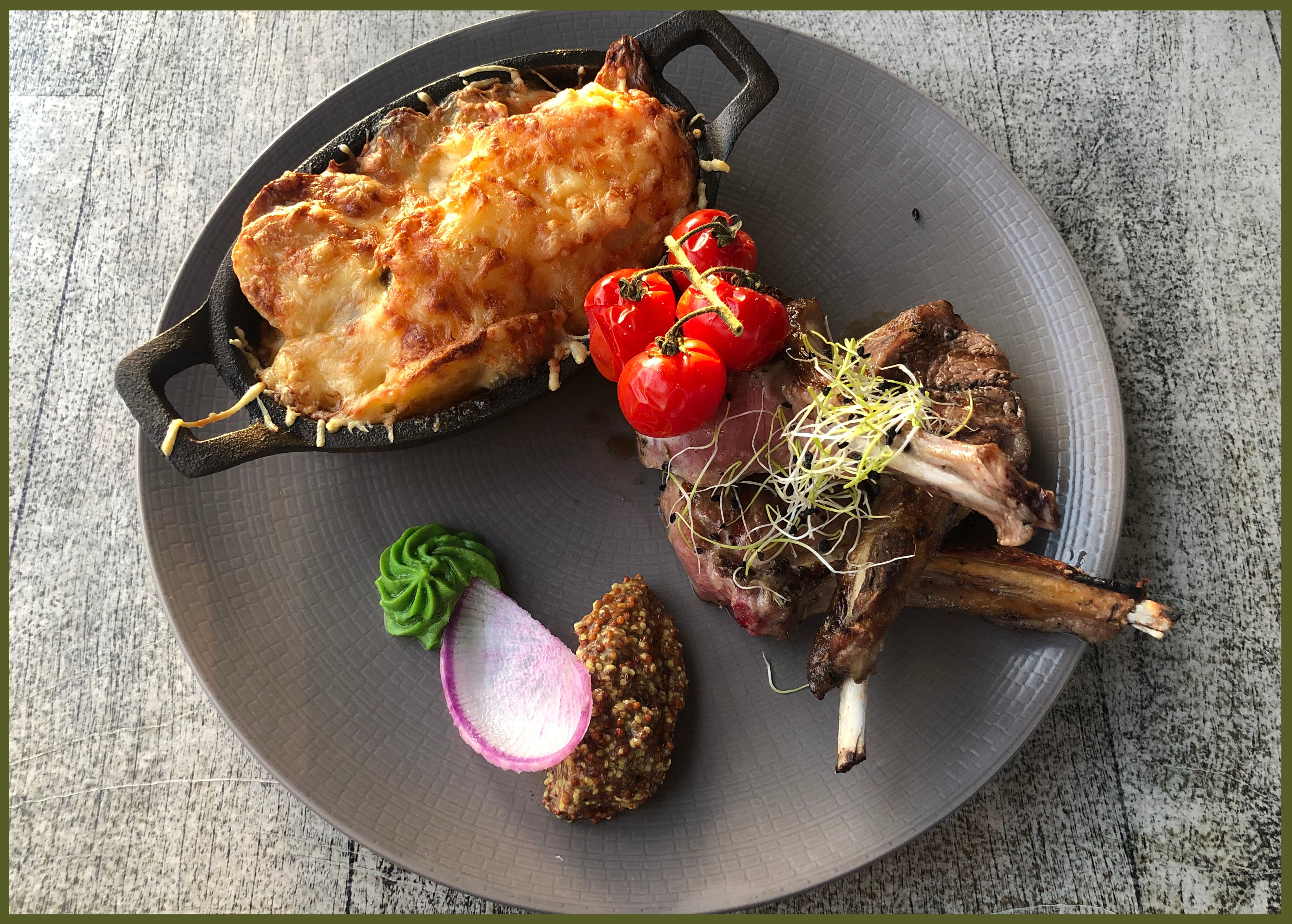
French Chefs & La Cuisine
François Pierre de la Varenne (1615–1678)
La Varenne was the foremost member of a group of French chefs, writing for a professional audience, who codified French cuisine during the reign of King Louis XIV (1643 – 1715).
He was the first to set down in writing the considerable culinary innovations achieved in France in the XVII century, while codifying food preparation in a systematic manner, according to rules and principles.
He introduced the first bisque and Béchamel sauce. He replaced crumbled bread with roux as the base for sauces, and lard with butter. Here one finds the first usage of the term’s bouquet garni, fonds de and reductions, and the use of egg-whites for clarification… all classics used in any respectable French restaurant today!
La Varenne second book, Le Pâtissier François (The French Cook 1653), is generally credited as being the first comprehensive French work on pastry-making, among the recipe, the famous mille-feuille!
His recipes are still used today, like the Galette des Rois for Epiphany that all respectable French citizen must buy at his local bakery.
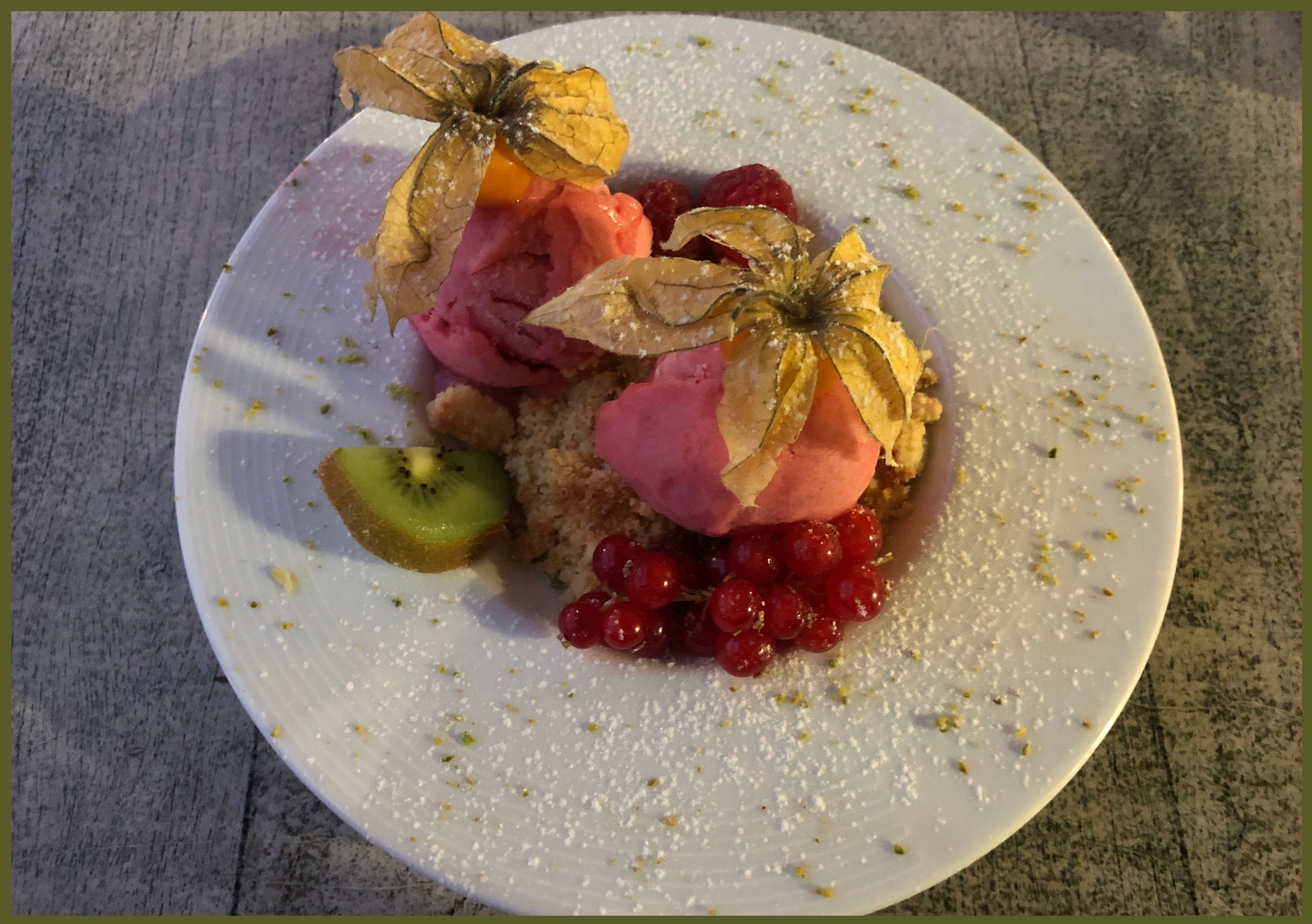
Alexandre Balthazar Laurent Grimod de La Reynière (1758 – 1839)
Grimod de La Reynière was an original, lawyer, journalist, soap opera and French writer who acquired fame under Napoleon I through his spiritual and sometimes acerbic criticism, his hoaxes and his love of gastronomy.
With access to a large family fortune, he became known during the Napoleonic era for his extravagant, hedonistic lifestyle. At one banquet he gave, he reputedly had a pig dressed up in fashionable style and sat it at the head of the table.
His Manuel des Amphitryons (Manual of the host) was an important treatise on several aspects of gastronomy: the dissection of meats at the table, the nomenclature of the newest menus and elements of politeness.
The renowned Guide Gastronomique Michelin published today was strongly influenced by Grimod de la Reynière gastronomy book, L’Almanach des Gourmands.
He is arguably the first professional writer on food, cookery and restaurant criticism!
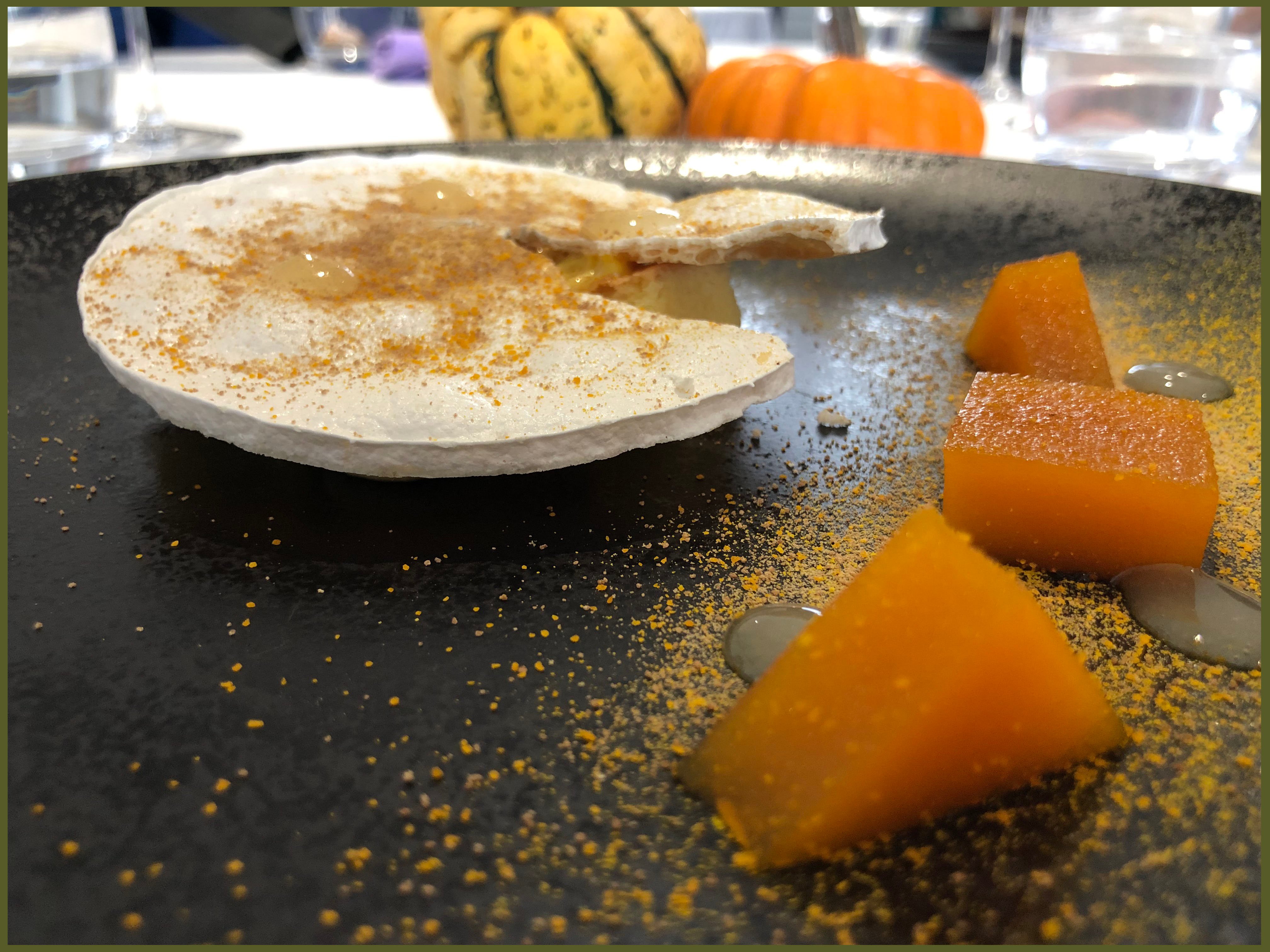
Jules Gouffé (1806 – 1877)
Le Livre de cuisine (The Royal Cookery Book) of Jules Gouffés had a strong influence on French gastronomy and inspired famous French chefs like Bernard Loiseau (who regretfully took his life away) is still considered the Apostle of the decorative cuisine!
His first job was during the ball held in 1823 by the city of Paris in honor of the Duc d'Angoulême to celebrate the Spanish Expedition which 7000 guests attended.
Then for seven years he became a pupil of the great Marie Antoine Carême, a French chef and an early practitioner and exponent of the elaborate style of cooking known as grande cuisine, the "high art" of French cooking.
A grandiose style of cookery favored by both international royalty and by the nouveau riche ("newly rich") of Paris.
Carême is considered one of the first internationally renowned celebrity chefs.
In 1867 he accepted an offer from Alexandre Dumas (the famous writer of the Three Musqueteers) and the Baron Brisse (owner of the famous Hotel Scribe in Paris) to become chef de bouche of the Jockey-Club de Paris.
While he held this position, he began writing books that ensured his renown. Most of his works were translated into English by his brother, Alphonse Gouffé, Head Pastry Cook to Queen Victoria.
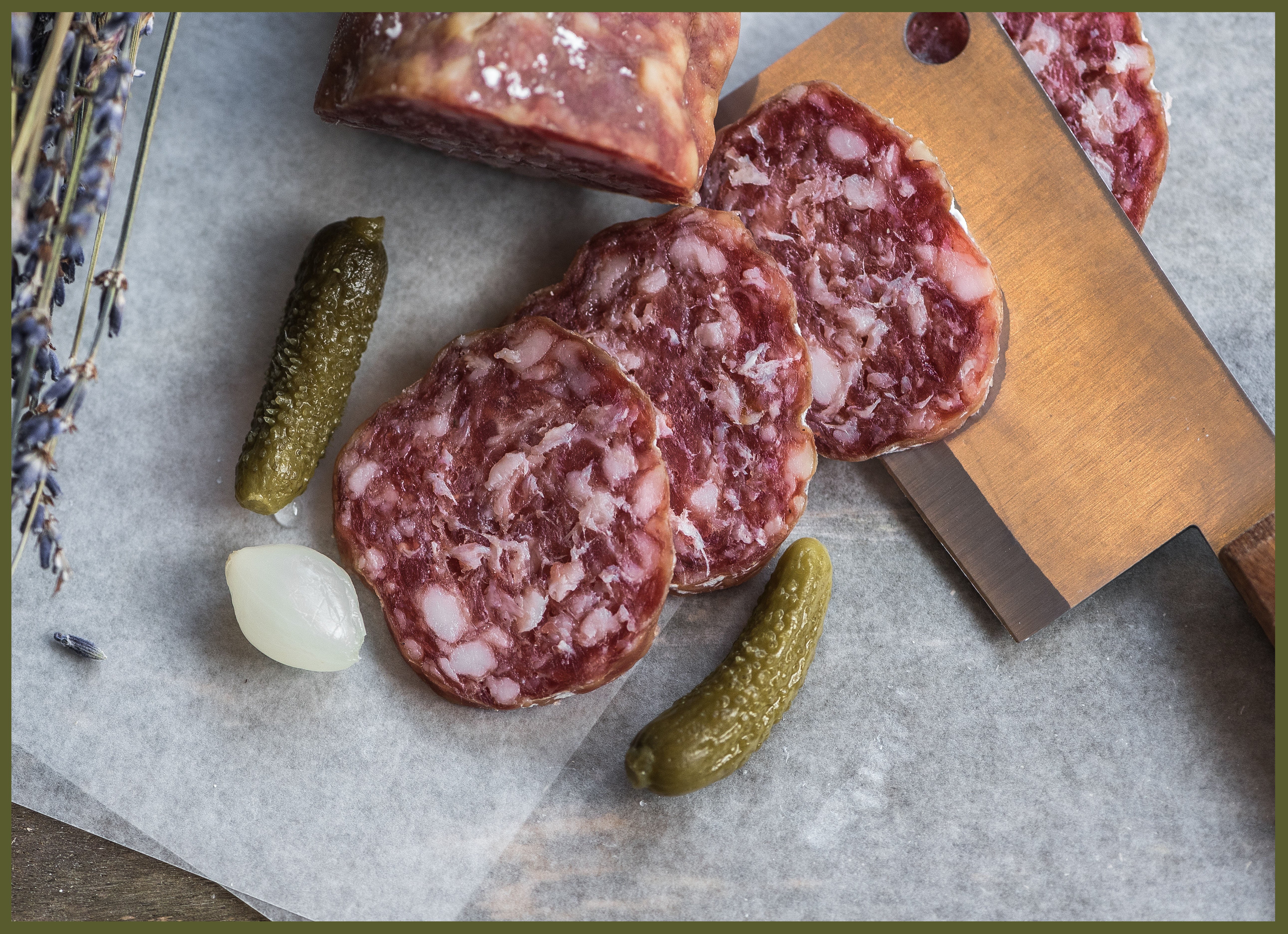
French Charcuterie
The word charcuterie dates back to the XV century deriving from la chair (the flesh) and cuit (cooked) bearing in mind that the preservation of cooked meat is a standard practice throughout Europe.
It commonly refers to food preparation based on meat and offal, raw or cooked.
They come mostly, but not exclusively, from pork, almost all parts of which can be used, and often have salt to preserve it.
In addition to pork le charcutier (the delicatessen-caterer) extends his preparations to fish, shellfish (mackerel rillettes, smoked salmon, lobster) and various vegetable products and of course various meats, in particular game (terrines and wild boar sausage), beef (Grison’s meat), poultry (goose rillettes, duck, rabbit terrine).
In France, however, a charcuterie product can only obtain a certificate of conformity if it is exclusively pork-based.
During one of our daily tour in Normandy, we will taste some traditional products found in a local Charcuterie such as Le Jambon de Bayonne, la Rillette du Mans, le pâté de campagne, le saucisson sec etc.… for a pleasant picnic off the beaten tracks with a fresh baguette!
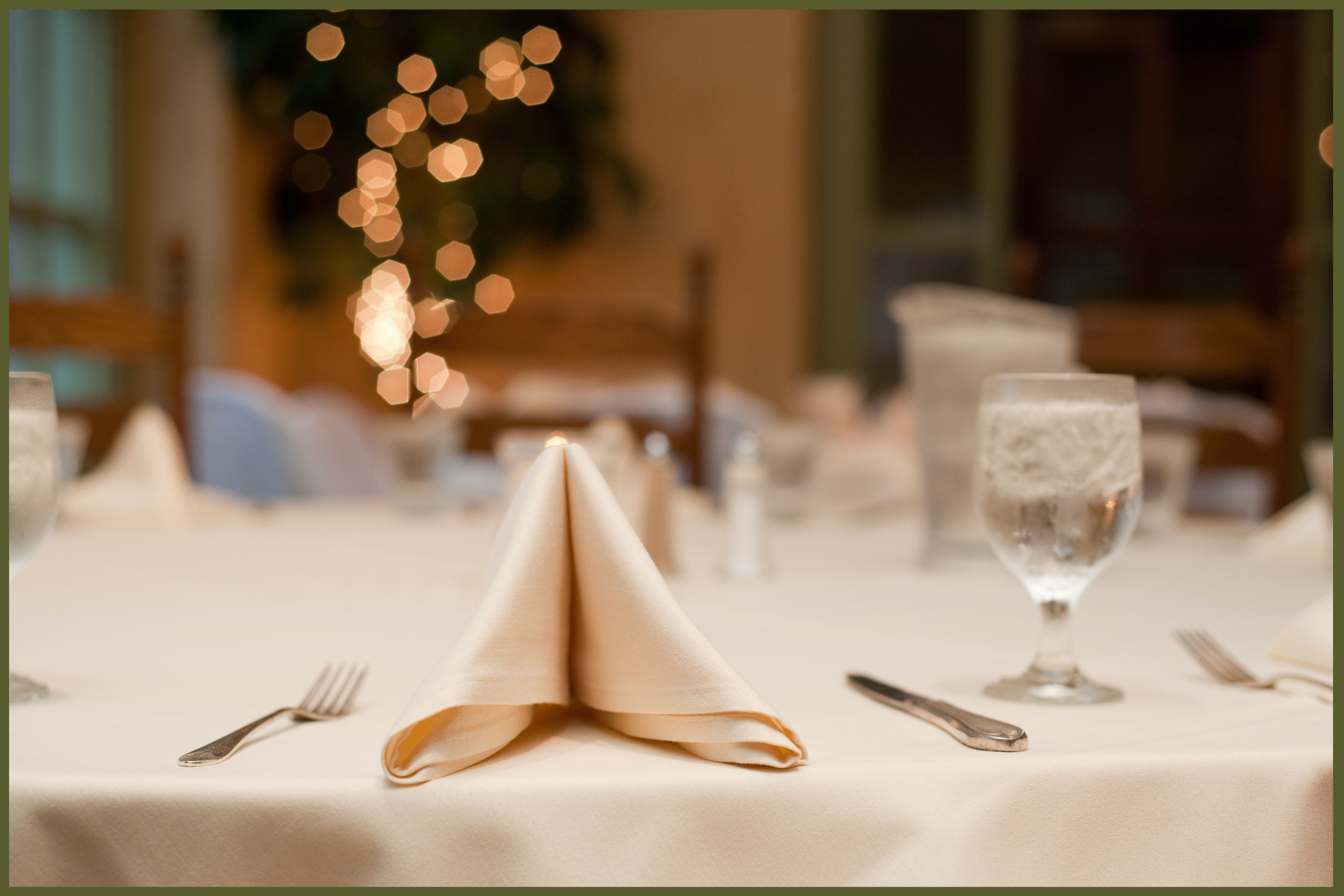
The art of dressing a plate with a napkin
The art of folding napkins comes from XVI century Florence when they were used as sculptural centerpieces for the table setting.
It’s a particular skill to be able to fold a napkin with such designs as “The Boar’s Head”, “The Bishop” or “The Mitre” which some restaurants still do to decorate their tables.
If you want to know how to fold a serviette in the shape of “The Bishop”, Mrs. Beeton's Book of Household Management, an extensive guide to running a household in Victorian Britain published in 1861, will give you the step by step on how to do so!
Most restaurants where we take our guests in Europe keep the tradition of setting the table with nicely designed napkins folding. A pleasure for the eyes.
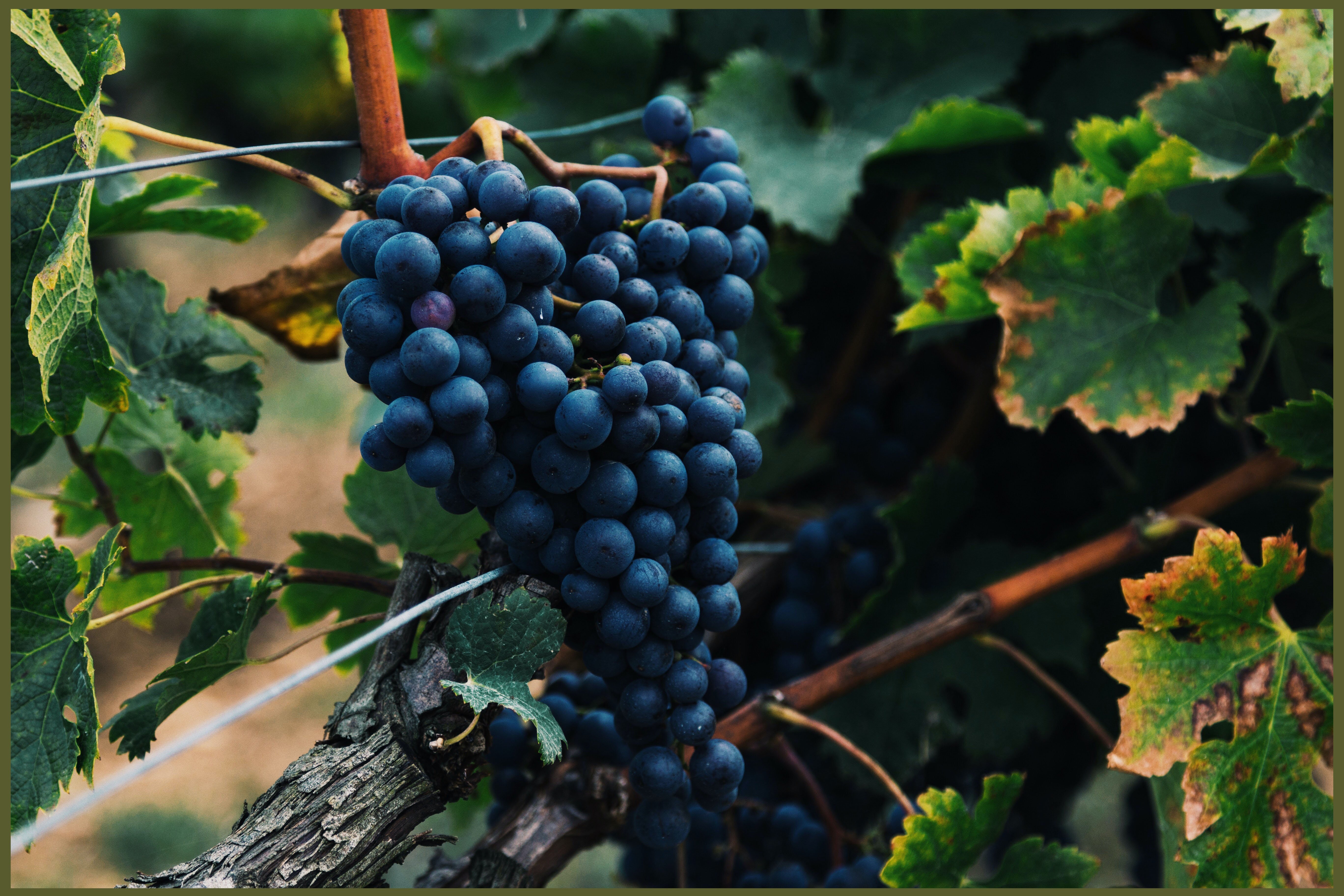
Wine - History
The oldest traces of wine found are from Iran around 6000 B.C. whilst in Egypt and western Asia they are traces dating back to 3000 B.C.
At that time, all wines were red, but Egyptians started making white wine coming from a variety of grapes.
By the time the Romans embraced viticulture around 200 B.C., Phoenicians and Greeks had been trading throughout the Mediterranean.
What the Romans learned was that the same type of grape could produce different wines pending where it was cultivated and harvested. They succeeded in storing the wine in amphoras to preserve the wine and had the know-how on how to flavor the wine with spices.
In France, wine was introduced by Greek settlers with the colonization of southern Gaul during the VI century B.C. Very quickly viticulture flourished with the founding of the Greek colony of Marseille. The Roman Empire then licensed regions in the south of France to produce wines. During the Middle Ages, monks maintained the vineyards and kept for themselves the wine-making knowledge for Mass and of course profit!
During the Elizabethan era in England (1558 – 1603) wine was available everywhere and for her subjects, inexpensive. Most subject of the Queen, adults and children drank wine as water was not fit for drinking. The nobles would drink hypocras, warm, spiced wines presumably to aid digestion.
The golden age of Queen Elizabeth I represented the apogee of the English Renaissance and saw the flowering of poetry, music and literature and the new style of theatre with playwriter’s like William Shakespeare!
When traveling to the First U.S. Army Assault Training Center on the west coast of England, you will have the opportunity to discover local wines.
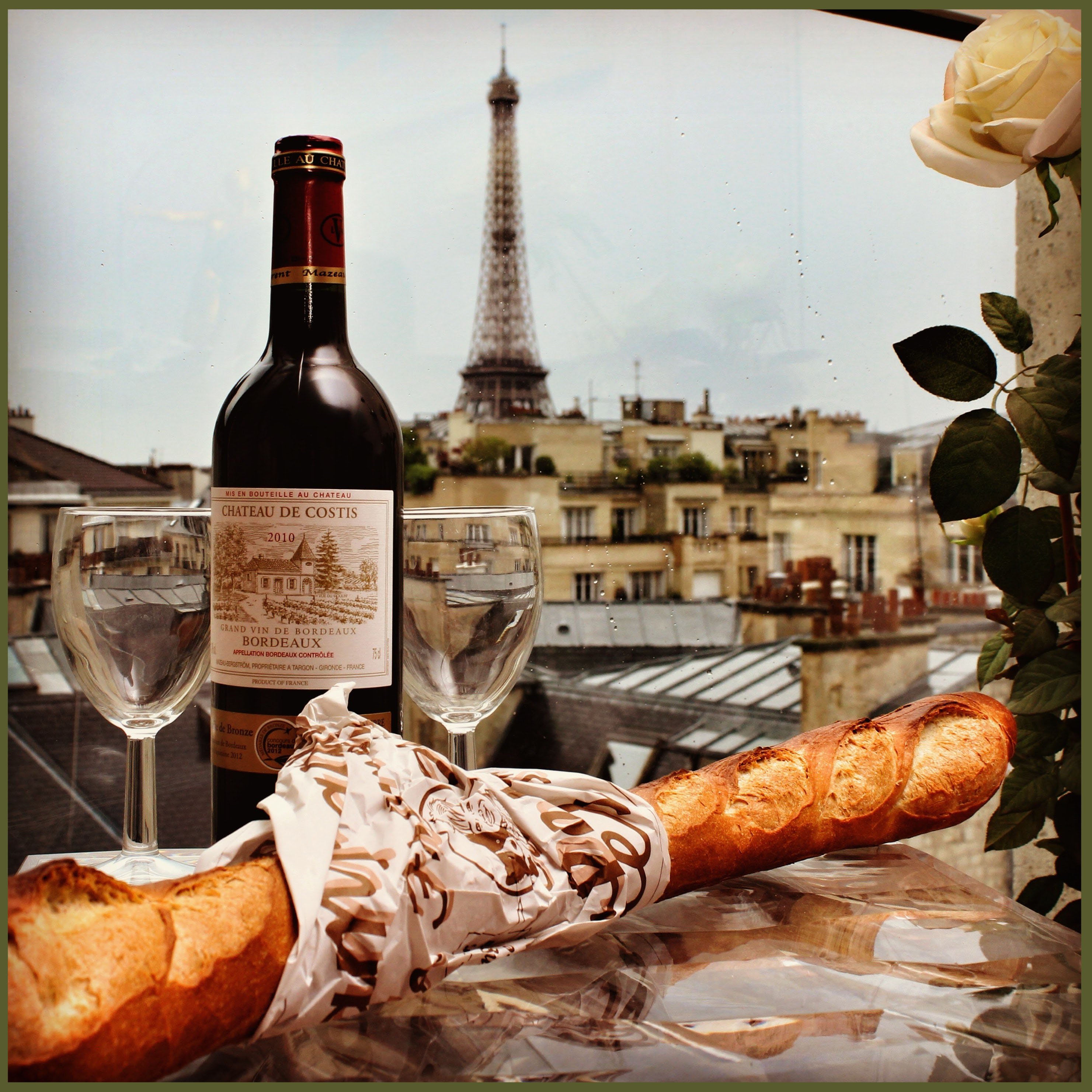
French Wine Grapes
Cabernet Sauvignon was the first variety of grape that appeared in France during the XVII century and is one of the most popular grape varieties of winemakers, mainly because it is an adaptable and resilient plant. The name comes from the accidental crossing between a white grape, the Sauvignon Blanc, and a red grape, the Cabernet Franc. The wine made from that grape usually ages well and because it is full-bodied, easily pairs with a wide range of food.
Chardonnay is a white noble grape coming from the Burgundy region. Easy to grow, it's cultivated all over the world. This variety is interesting for the winemakers as it is extremely sensitive to the terroir where it’s grown, taking on notably the character of the region. Some of the classics in the Burgundy region are the famous Chablis and Corton Charlemagne. It's also widely used in the Champagne region.
While visiting the town of Reims, the cathedral where the Kings of France were crowned and see where the Third Reich signed the unconditional surrender May 7th, 1945, we will visit one of the best Champagne houses for a tour and tasting.
Merlot Red is one of the six noble grape varieties traditionally used in the Bordeaux region that appeared around the XVIII century. For the winemakers it’s easy to grow and the end result is pleasing to the palate whether drunk on its own. The renowned Château Pétrus is elaborated with 95% of Merlot and is one of the most expensive and famous wines in the world. Today the Merlot Red is vinified everywhere.
Pinot Noir is also considered a noble grape originating first in the Burgundy region probably cultivated by the Romans around 100 A.D. Today it’s vinified in other parts of the world. Because it’s a variety difficult to cultivate, the price of the bottle is usually high if you are looking for a good bottle! Le Clos Vougeot was my first experience of tasting a great bottle from Burgundy in the late 80s!
You will have the opportunity to discover, during one of our European tours, the only red wine produced in Alsace, the famous Pinot-noir d’Alsace.
Riesling, a noble grape comes from the Alsatian region, appreciated by the winemakers, produce wines more or less dry thanks to the grape characteristic of acidic and floral aromas. Like the Chardonnay, the Riesling can age well in oak barrels.
While discovering the only concentration camp in France and visiting the incredible town of Strasbourg, during one of our European tours, you will be able to taste this unique wine both in the famed dish, “La Choucroute” and drink it!
Sauvignon Blanc is also a noble white grape from the Bordeaux region often blended with other white grapes to make sweet dessert wines like the renowned Sauternes. The grape later was cultivated in the Loire Valley region with the classic Sancerre. Today it used by winemakers around the world following the New Zealand’s successful production of Sauvignon Blanc wines.
While visiting some of the Renaissance Châteaux of the Loire Valley, Chambord, Chenonceau, Blois, Amboise during one of our European tours, you will have the opportunity to discover the incredible cheese Crottin de Chavignol and taste the Sancerre.
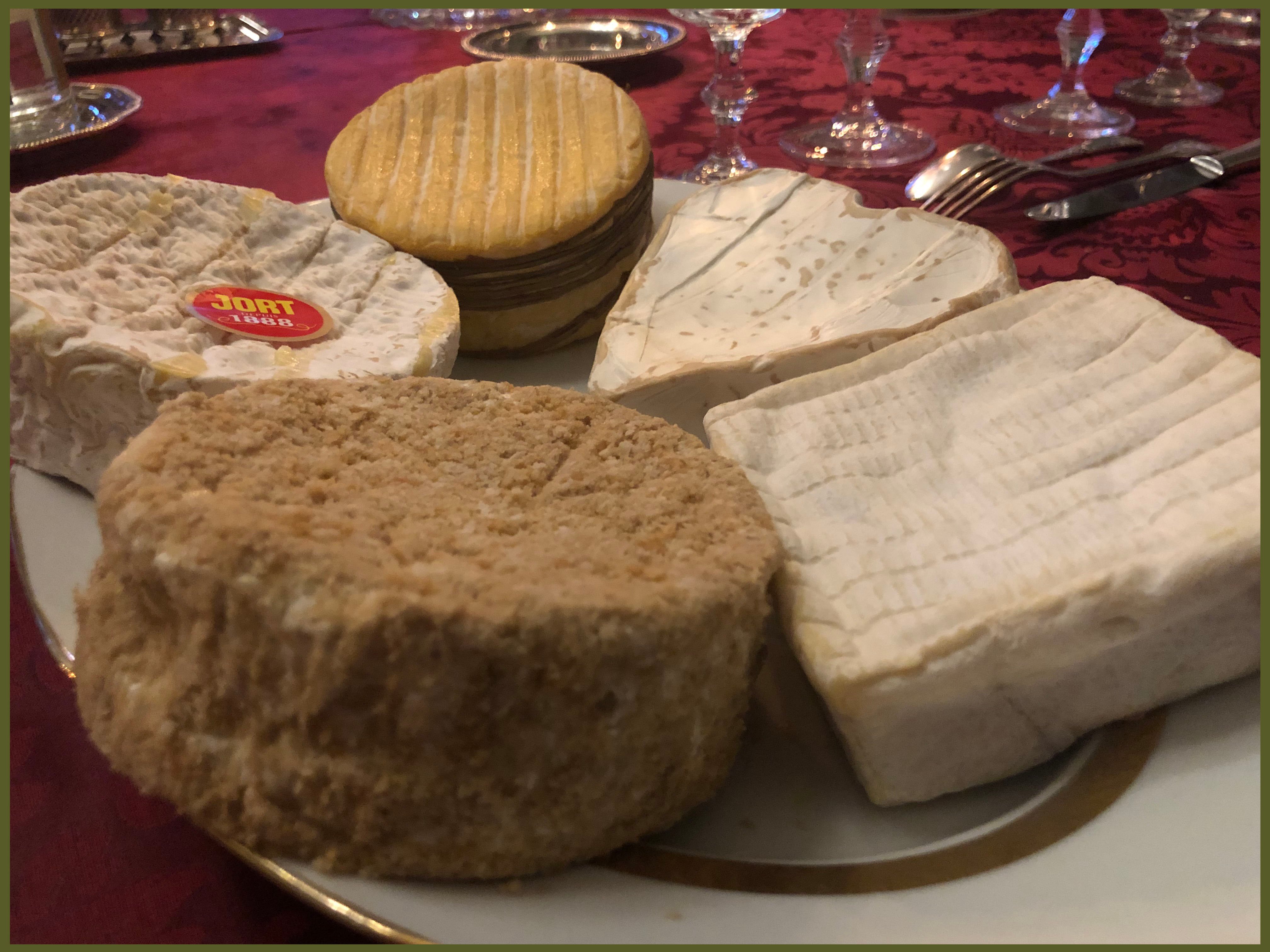
French Cheeses
“How can you govern a country that has 246 different types of cheese?” is the famous quote of Charles de Gaulle, leader of the Free French forces from London during WWII and later President of France.
It’s considered today that they are between 350 and 450 different types of cheese with at least 1200 varieties.
Of all those cheeses only 45 have the label AOC (appellation d’origine contrôlée) which guarantees the origin of the cheese, the first being the famous Roquefort in 1925! There are eight families of French cheeses
Fresh cheeses which contain a lot of water like the famous Le Petit Suisse
Soft cheeses with a natural rind like the Camembert (AOC) of Normandy or Brie de Meaux (AOC)
Soft cheeses with a washed rind like the favorite cheese of my sister, the Reblochon (AOC)
Pressed cheese which has the moisture pressed out, the incredible Ossau-Iraty (AOC) from the Basque region
Pressed and cooked cheeses which are ripened in cylinders like the Comté (AOC) that marries very well with an endive’s salad or the famous Gruyère
Goat’s cheeses like the Crottin de Chavignol (AOC) incredible on a toast above a nest of green salad
Blue cheeses usually ripened in dark and humid mountain caves. My favorite of course is the Roquefort (AOC), but you also have the Fourme d’Ambert (AOC), le Bleu d’Auvergne (AOC) to name a few.
Processed cheeses are made by blending other cheeses and are often flavored with herbs, spices or garlic like le Boursin or Le Tartare.
All our European tours starting off in the U.K. will give you the opportunity to taste unknown incredible British cheeses before tasting others in France and Europe!
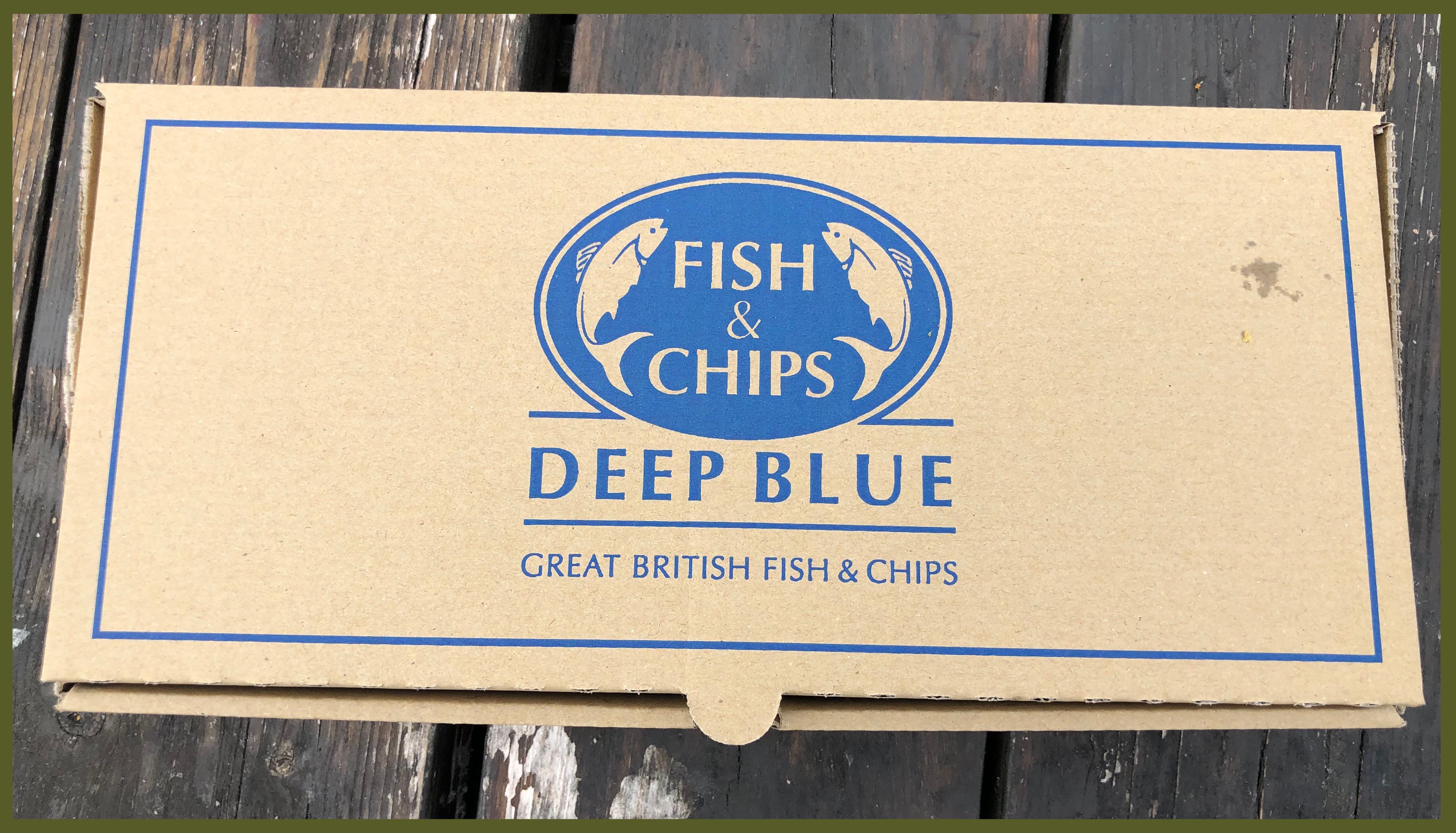
Fish & Chips
Nobody knows for certain who invented this perfect combination of cod dipped into a rich batter made of flour and beer, fried in a clean batch of good quality oil and chips!
Some believe it was firs served by Joseph Malin in the 1860’s while other think it was first introduced at Dyson’s pub in Oldham a few years later by John Lees.
In 1910 they were over 25,000 fish and ships shops across the United Kingdom climbing to over 35,000 shops before WWII.
This is surely the reason why the British Government safeguarded the supply of fish and chips during the Second World War and was one of the few foods in the UK not subject to rationing during the war!
Prime Minister Winston Churchill referred to the combination of fish and chips as "the good companions".
During one of our European tours starting in the U.K. you will have the opportunity to try and enjoy the fish and chips with a sauce tartare along the sea front of the English Channel.
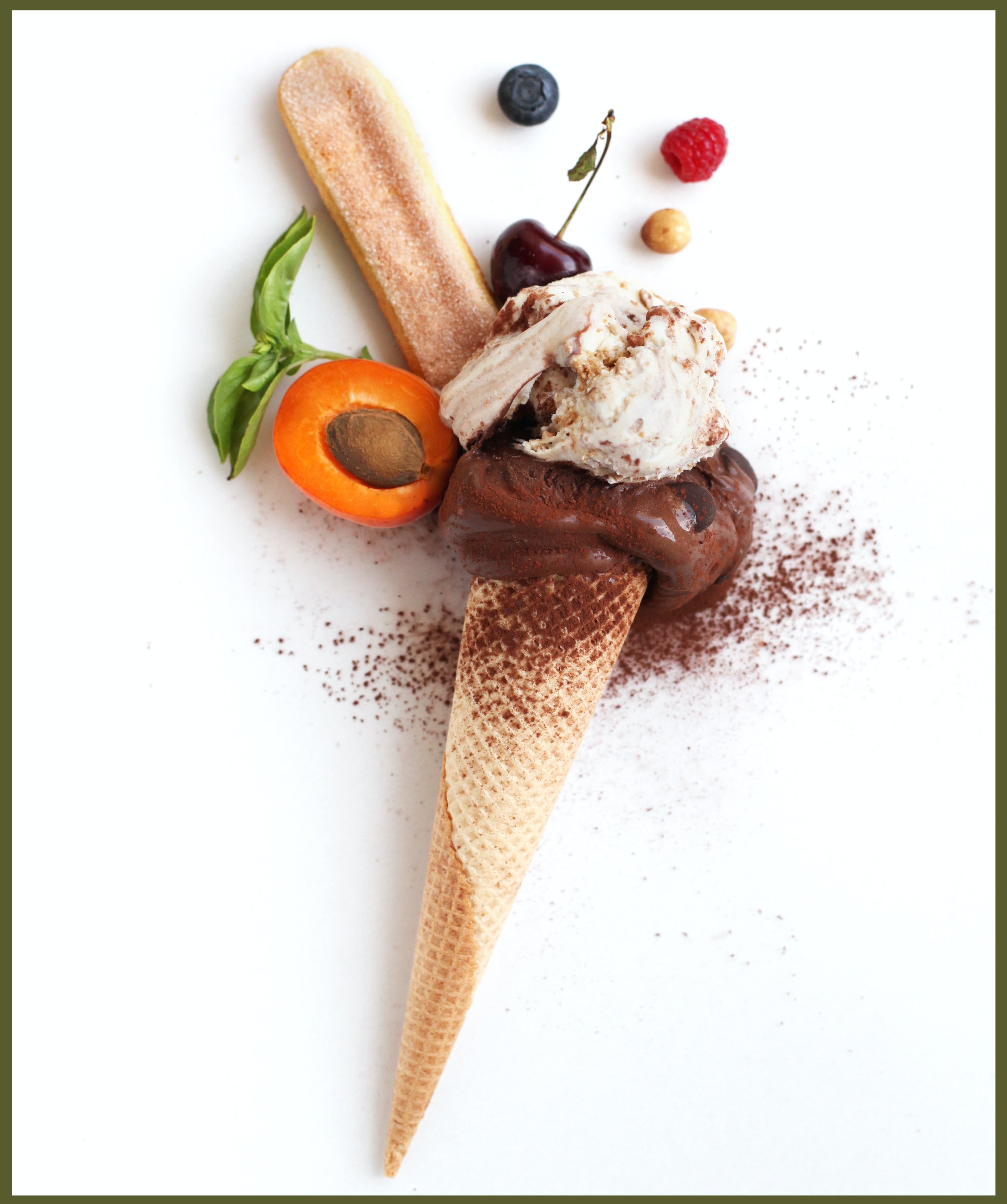
Ice Cream
The origins of ice cream are not clearly known even though Marco Polo is often credited with introducing it in Europe during the XIII century.
Some others state that it was actually Catherine de’ Medici and her Florentine cooks who brought it to France from Italy when she married the King of France, Henri II in 1547.
Some others affirm that it was Charles I, King of England who ordered his chef not to divulge the recipe during his reign so as to keep it for himself.
The King was executed for high treason in January 1649! Rest assure it has nothing to do with ice cream…
Soon ice cream became popular worldwide and by the XVII century, Antonio Latini from Naples – Italy wrote down his own recipe for “sorbetti”.
As such, he is today credited with the invention of the milk-based sorbet, which is regarded as the first official ice cream even though it’s believed that sorbets originated in ancient Persia.
During our 100 days Normandy campaign tour you will have the opportunity to taste the best ice cream of Normandy, if not of France made with the milk and fresh cream of Isigny-sur-Mer!
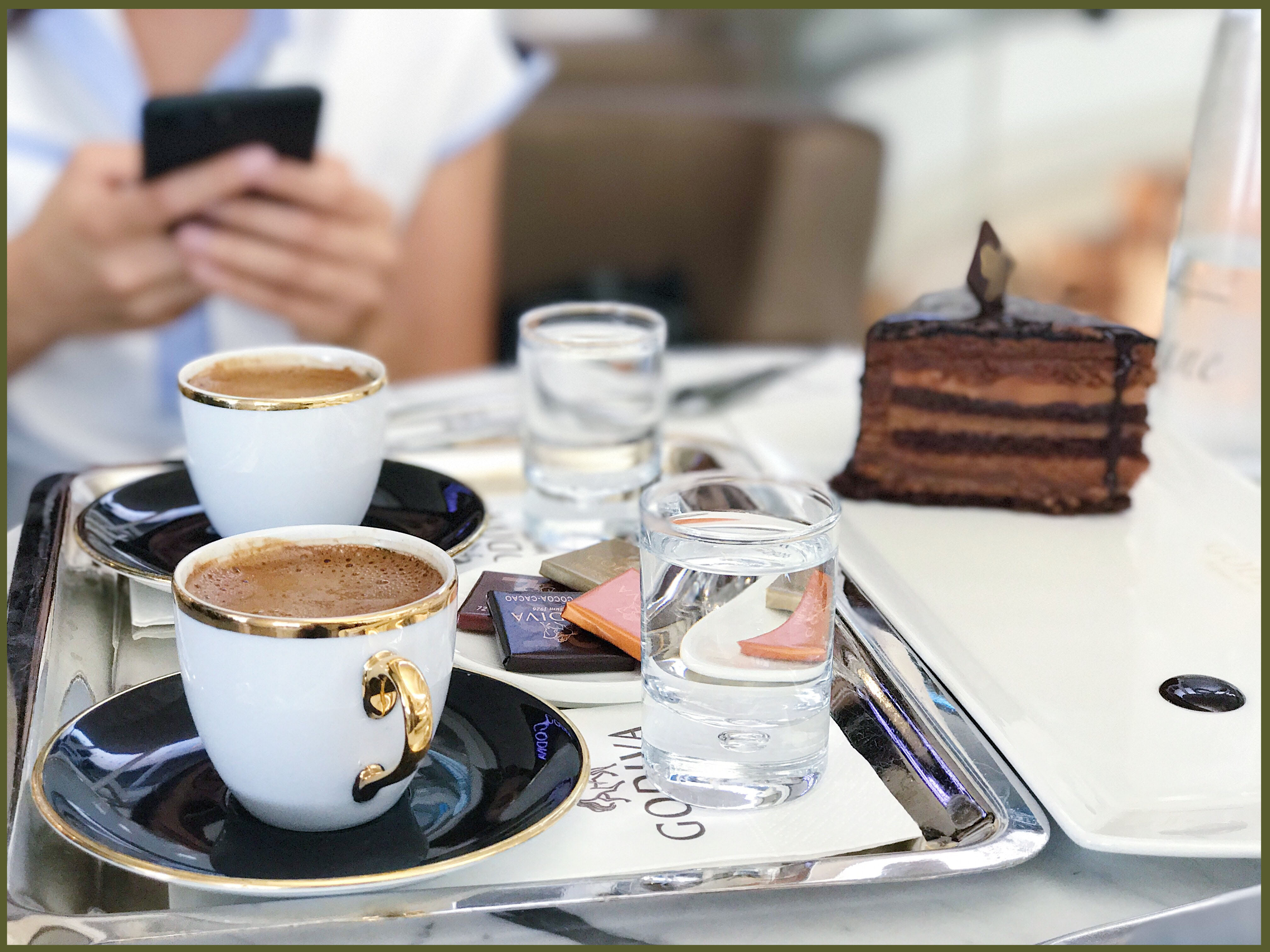
Coffee
No one knows for sure, but it is believed that coffee was first cultivated on the Ethiopian plateau, where a goat herder Kaldi is said to have had noticed that his goats after eating the berries from a certain tree became so full of energy, they stayed awake all night long!
It is said that he shared his findings with the abbot of the local monastery who decided to make a drink with the berries and found that it kept him wide awake through the long evening of prayers!
Quickly other monks of the monastery tried it and the discovery began to spread and the coffee beans started their journey soon across the globe!
At first it was considered in Europe a luxury and valued only for its medicinal benefits but by the XVII century it was found in all the households.
After the defeat of the Ottoman Turks during the battle of Vienna in 1683, bags of coffee were found in the captured camp of Kara Mustafa’s army.
Jerzy Franciszek Kulczycki, a Polish nobleman and diplomat of the army is said to have come up with the idea of filtering the coffee and sweeten the bitter drink with milk and honey. The success was immediate!
The legend continues stating he was first person to obtain a license to serve coffee after his heroic actions during the siege of Vienna.
When traveling on our Victory in Europe tour, you will have the pleasure to taste some popular Viennese coffees at one of the best traditional coffee houses in Vienna.
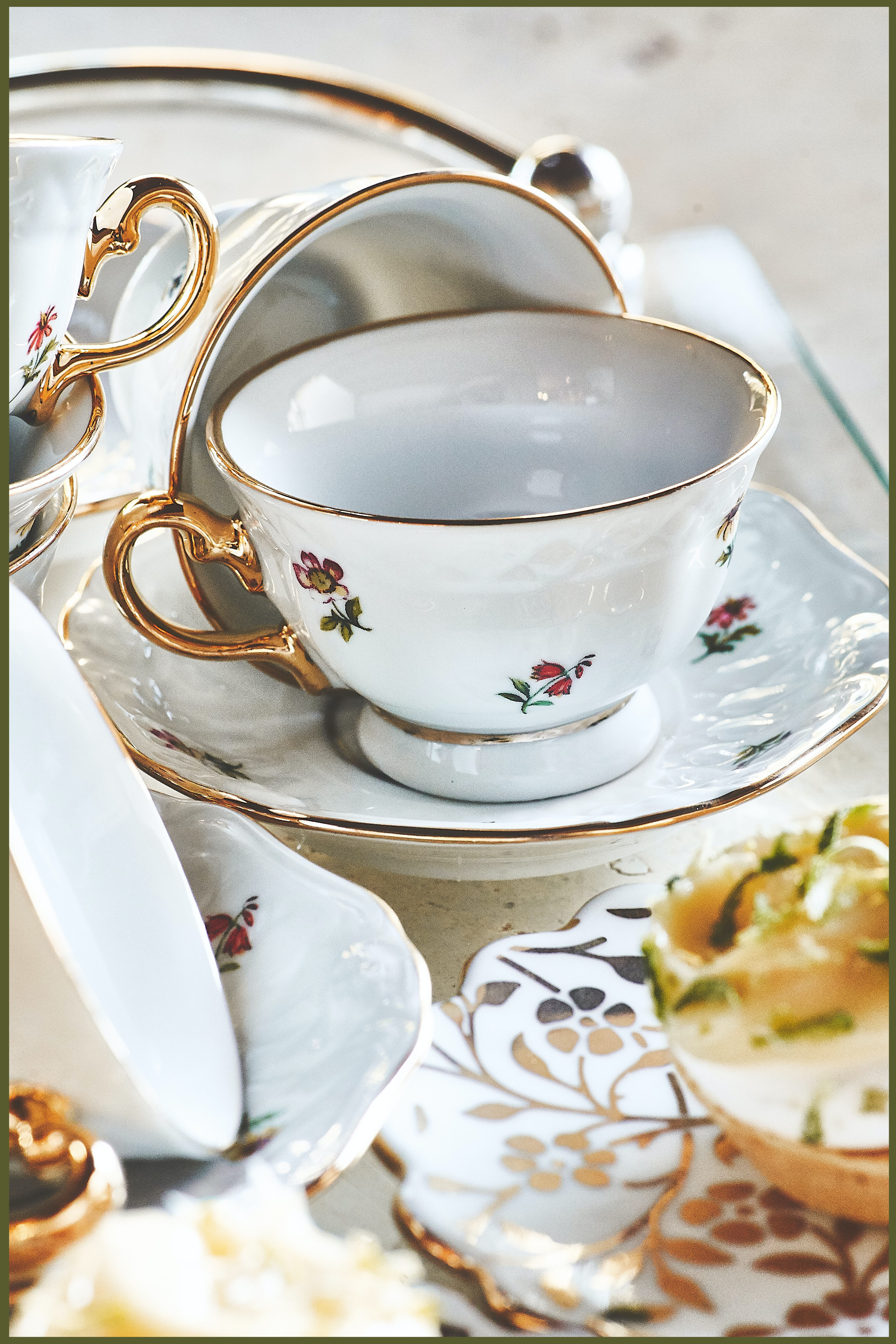
Tea
The tea plant used 6,000 years ago in China are still the same type of tea plant used today! Back then the leaves were consumed as a vegetable, then eaten as matcha, a finely ground powder mixed with hot water.
Not until the XIV century did loose leaves become the standard way to drink it.
Dutch Traders brought back to Europe during the XVII century tea, then the British spread it out throughout their Empire!
As the demand grew, the British during the XVIII century decided to seize control of the opium trade so as to exchange it for tea, silk and porcelain but then a major health problem occurred in China as the numbers of opium addicts increased.
In 1839, a Chinese official seized a British shipment of opium which consequence was the first Opium War between the two countries!
British East India Company then broke the Chinese monopoly on the trade, gathering information and stealing Chinese plants with the complicity of Robert Fortune, a Scottish Botanist.
The objective being for the British to be able to grow their own crops in colonial Sri Lanka and India.
It’s pretty much at the same period, 1840s, that the famous light afternoon tea began in England thanks to Anna Maria Russell, Duchess of Bedford who found that taking an afternoon snack that such a perfect refreshment until the late dinner of the XIX century!
In England, we give our guests the opportunity to discover the afternoon tea served with the famous scones, a delight!

















